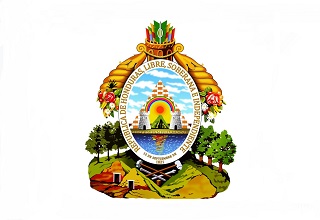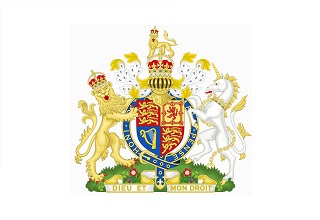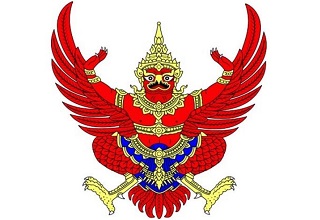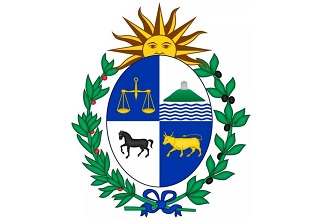Regarding the Inspection and Quarantine Requirements for the Chickpeas from Uzbekistan
1. Basis for inspection and quarantine
(1) The Biosafety Law of the People's Republic of China;
(2) The Entry-Exit Animal and Plant Quarantine Law of the People's Republic of China and the Regulations for its implementation;
(3) The Food Safety Law of the People's Republic of China and its implementing regulations;
(4) The Measures for the Supervision and Administration of Entry-Exit Grain Inspection and Quarantine;
(5) The Measures of the People's Republic of China for the Administration of Import and Export Food Safety;
(6) Protocol between the General Administration of Customs of the People's Republic of China and the Ministry of Agriculture of the Republic of Uzbekistan on Phytosanitary Requirements for Uzbek Chickpeas exported to China.
2. Names of goods allowed to enter the country
In this notice, Cicer arietinum refers to the seeds of non-seed chickpeas grown and processed in the territory of Uzbekistan and exported to China for consumption or food processing.
3. Concern about pests
Chickpeas should not carry the following pests:
(1) Trogoderma granarium
(2) Callosobruchus maculatus
(3) Alfalfa mosaic virus
(4) Tomato spotted wilt virus
(5) Verticillium albo-atrum
(6) Verticillium dahliae
4. Pre-shipment requirements
4.1 Registration requirements.
Chickpea production and processing enterprises shall be audited by the Ministry of Agriculture of the Republic of Uzbekistan (hereinafter referred to as Uzbekistan), confirm that they meet the requirements of the General Administration of Customs of the People's Republic of China (hereinafter referred to as the China), and recommend them to the China. The China will review the company information provided by the Uzbekistan and conduct video inspections or on-site inspections if necessary. After the approval, the GACC will publish the list of registered enterprises on the official website.
4.2 Production requirements.
(1) Uzbekistan shall adopt internationally recognized investigation and monitoring methods, carry out epidemic surveillance and pesticide use investigation on quarantine pests of concern to China during the growing and storage periods of chickpeas, and implement effective field pest prevention and control measures to reduce the occurrence of pests;
(2) The Uzbekistan shall inform the China as soon as possible if new important pests are found in the monitoring. The Uzbekistan shall keep the pest monitoring and control records of the planting base and provide them when requested by the GACC.
4.3 Packing and transportation requirements.
(1) Chickpeas to China shall be transported in packaging and packed with new materials that meet the requirements of the China;
(2) Each package shall be marked "This product is exported to the People's Republic of China" in English and the product name, origin, production and processing enterprise and its registration number, the name and address of the exporter and other information;
(3) The means of transport shall meet the requirements of health and epidemic prevention, and Uzbekistan shall conduct thorough inspection before shipment to prevent the mixing of harmful organisms.
4.4 Product requirements.
Chickpeas shall comply with the phytosanitary laws and regulations of the People's Republic of China, the national standards for food safety and the provisions of this Protocol, and shall not contain quarantine pests, soil, live insects, insect eggs of concern to the People's Republic of China, and shall not be mixed with other beans, weed seeds, plant residues, sand and other impurities.
4.5 Pre-export quarantine and certificate requirements.
(1) Uzbekistan shall conduct inspection and quarantine on chickpeas before export. For goods that meet the requirements of the China, a phytosanitary certificate shall be issued in accordance with the International Standard for Phytosanitary Measures (ISPM) No. 12 "Guidelines for Phytosanitary Certificates". and in The additional statement, it says, "The chickpeas meets the provisions of 'the Protocol of Inspection and Quarantine Requirements for Chickpeas Exported from Uzbekistan to China' and does not carry any quarantine pests of concern to China", and indicate the name of the production and processing enterprise and its registration number, container number and seal number;
(2) If live insects are found in chickpeas exported to China, effective quarantine treatment should be carried out before export. The method, time, temperature and pharmaceutical information of quarantine treatment should be indicated in the phytosanitary certificate.
5. Entry inspection and quarantine
5.1 quarantine examination and approval.
Importers should apply for an Entry Plant and Animal Quarantine Permit before signing a trade contract.
5.2 Verification of documents.
(1) Check whether there is an Entry Plant and Animal Quarantine Permit attached;
(2) Check whether it is from a registered enterprise;
(3) Check whether the phytosanitary certificate is true and valid.
5.3 Inspection and supervision of goods.
(1) In accordance with relevant laws, administrative regulations, rules and other provisions, combined with Article 4 and Article 5 of this requirement, carry out inspection and quarantine on imported chickpeas, and allow them to enter the country after passing;
(2) Chickpeas shall be inspected and quarantined in the supervision places designated by the Chinese Customs.
5.4 Handling of non-conformance.
(1) If there is no valid phytosanitary certificate, it shall be returned or destroyed;
(2) Those from unregistered enterprises shall be returned or destroyed;
(3) Where live quarantine harmful organisms or other live harmful organisms are found and effective treatment methods are available, disinfection treatment shall be carried out; If there is no effective treatment method, it shall be returned or destroyed;
(4) Those found not to meet China's national food safety standards shall be returned or destroyed;
(5) Found with soil, weed seeds, plant residues and gravel and other impurities, in accordance with relevant laws and regulations for harmless treatment, return or destroy treatment;
(6) Any other situation that does not meet the requirements of China's entry inspection and quarantine will be dealt with in accordance with relevant laws and regulations.
China will inform Uzbekistan of any such failure and, depending on the severity of the violation, take measures such as suspending the export of relevant enterprises and even suspending the export of Uzbek chickpeas to China.
GACC
Feb. 4, 2024




